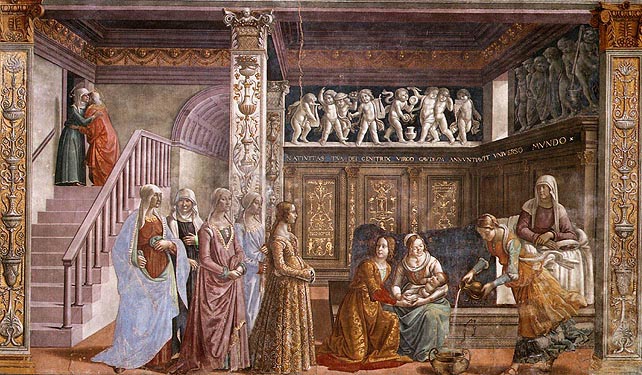
Mi è sempre piaciuto il pittore Domenico Ghirlandaio, un artista del Rinascimento che lavorò a Firenze. Nacque nel 1449 e morì nel 1494; aveva solo quarantacinque anni. L’ultima volta che sono stata a Firenze ho ammirato il ciclo di affreschi della vita della Vergine che Ghirlandaio ha dipinto per la Cappella Tornabuoni nella chiesa di Santa Maria Novella.
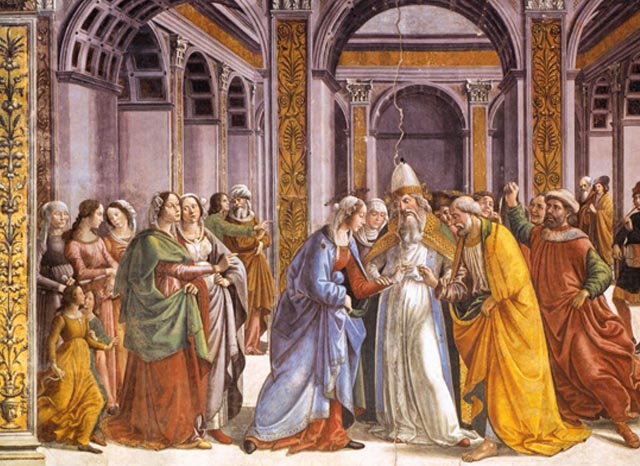
I have always liked the painter Domenico Ghirlandaio, an artist of the Renaissance that worked in Florence. He was born in 1449 and died in 1494; he was only forty-five when he died. The last time I was in Florence I admired the cycle of frescos of the life of the Virgin that Ghirlandaio created for the Tornabuoni Chapel in the Church of Santa Maria Novella.
Le composizioni di Ghirlandaio sono allo stesso tempo grandi ma decorose. C’è una precisione ed un occhio alla delineazione delle forme delle figure che potrebbero essere dovuti al fatto che Ghirlandaio ha iniziato come apprendista da un gioielliere. Ghirlandaio ha continuato la sua carriera diventando un pittore eccellente ed è stato anche uno dei primi maestri di Michelangelo. È certo che Michelangelo con le sue interpretazioni magistrali del peso e della forma tridimensionale, abbia osservato ed imparato dalle tecniche di Ghirlandaio.
Ghirlandaio’s compositions are at the same time large but decorous. There is a precision and an eye towards contouring his figures that could be due to the fact that Ghirlandaio began his career as an apprentice to a jeweler. Ghirlandaio went on to become a talented painter and was also one of Michelangelo’s first teachers. Surely Michelangelo would have observed and learned from Ghirlandaio’s techniques of his masterful rendering of weight and three-dimensional form.
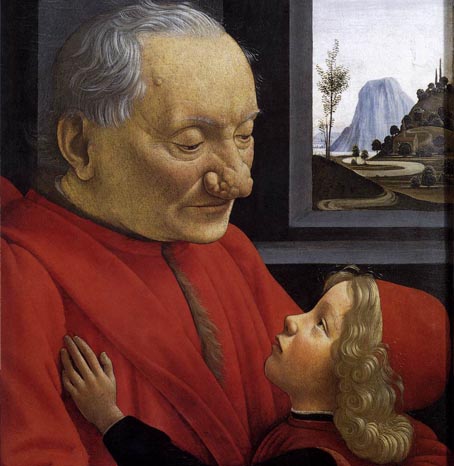
L’altro giorno stavo ammirando il “Ritratto del vecchio e fanciullo” di Ghirlandaio. La parola ritratto significa “portrait” e la parola “autoritratto” significa “self-portrait”. In questo quadro non conosciamo l’identità dell’uomo o del ragazzo ma è un bell’esempio dei ritratti del Rinascimento. L’artista cerca di coinvolgere e attirare lo spettatore, creando un attaccamento emotivo delle persone con il quadro. C’è un cambiamento stilistico e psicologico di come le persone sono ritratte rispetto alle precedente epoche del primo Rinascimento e Medievale.
The other day I was admiring the “Portrait of an Old Man and a Youth” by Ghirlandaio. The word “ritratto” means portrait and the word “autoritratto” means “self-portrait.” In this painting, we don’t know the identity of the old man or the young boy but it is a beautiful example of Renaissance portrait painting. The artist seeks to involve and draw in the spectator, creating an emotional attachment to his subjects. There is a stylistic and psychological change as to how people were portrayed as compared to the precedent eras of the early Renaissance and Medieval periods.
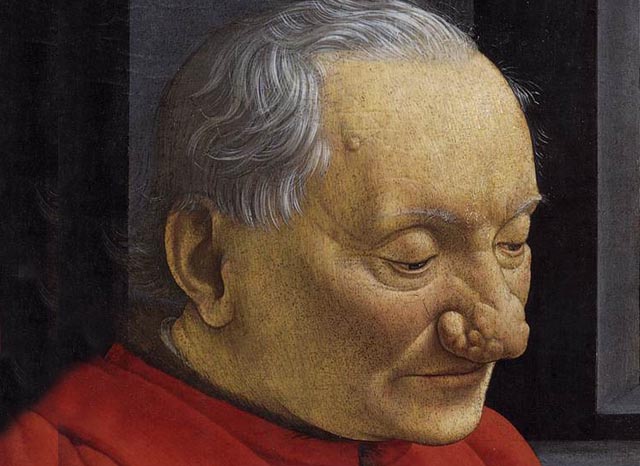
In effetti lo spettatore ha la sensazione che ci sia qualcosa di più che accade nel ritratto. In realtà, concentrandosi sul profilo dell’uomo e il modo con cui lui guarda il ragazzo, lo spettatore è anche ispirato a creare un dialogo tra i due. Ghirlandaio non ha idealizzato il profilo dell’uomo in alcun modo. Invece ha raffigurato il vecchio con tutti i suoi difetti, le rughe e la faccia invecchiata e e il naso nodoso. Quando guardo il naso mi viene in mente la parola “bitorzoluto”.
Indeed the viewer has a sense that something is happening in the portrait. In fact, focusing on the profile of the man and the way he gazes at the boy, the viewer is inspired to create a dialogue between the two. Ghirlandaio has not idealized the man’s profile in any way. Instead, he depicts the old man with all his defects, his aged face with wrinkles and lines, and his knobby nose. When I look at his nose the word “bitorzoluto” (which means knobby) comes to mind.
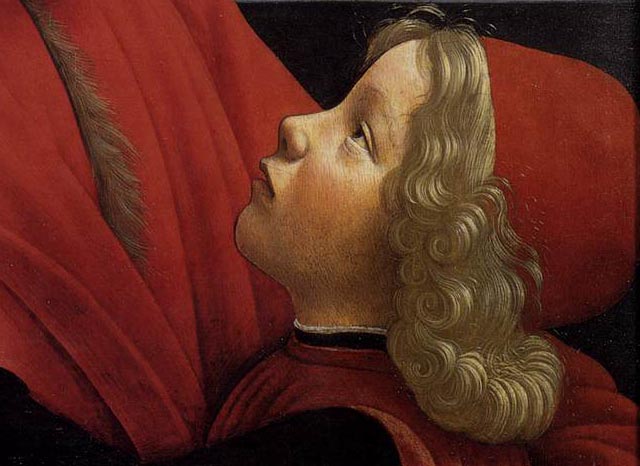
Dal volto segnato dalle intemperie è possibile immaginare che l’anziano abbia una saggezza tipica della sua età. Lui è qualcuno che ha esperienza del bene e del male, delle delusioni e delle gioie — di tutto quello che la vita ha da offrire. Al contrario il ragazzo, con la pelle chiara e riccioli d’oro, forse suo nipote, è bellissimo. Sembra un innocente. Il fanciullo tocca il petto dell’uomo con affetto e lo guarda diretto negli occhi come dire, “Mi fido di te. Tue sei alla fine del percorso e io sono solo all’inizio. Dammi una direzione. Indica la strada giusta.”
We can imagine from his well-worn appearance the man has great wisdom that comes from his advanced age. He is someone who has experienced the good and that bad, the disappointments and the joys that life has to offer. In contrast, the boy with his fair skin and golden curls, perhaps his grandson, is beautiful. He appears to be quite innocent. The boy touches the man’s chest affectionately and looks him directly in the eye as if to say, “I trust you. You are at the end of the path and I am just beginning. Give me direction. Point me in the right way.”
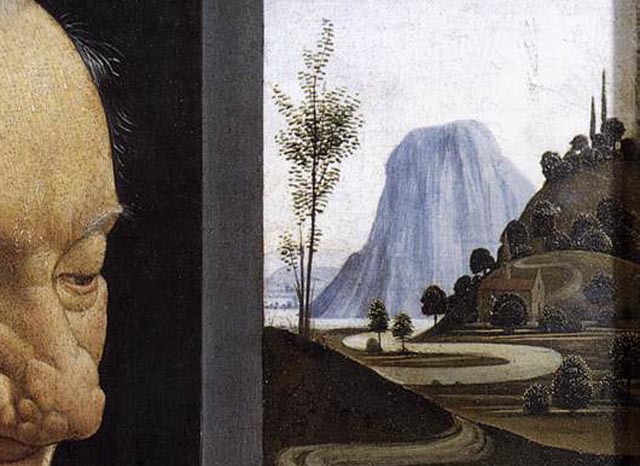
Per rafforzare quest’idea, sullo sfondo dietro le due figure, vediamo una finestra che si affaccia verso il mondo, al di là. Il paesaggio è nebuloso e non chiaro. Però si può vedere una strada tortuosa che si snoda tra le montagne. Chissà dove porterà la strada e dove finirà.
To reinforce this idea, in the background behind the two figures we see a window looking out into the world beyond. The landscape is hazy, but you can see a twisting road that winds into the mountains. Who knows where the road will go and where it will end?
Potrebbe essere un’allegoria; la nostra vita è un viaggio e impariamo lungo la strada, senza mai sapere dove la strada ci porterà e quello che incontreremo. Ma sicuramente, un giorno la bellezza, la gioventù e l’innocenza, come quella del ragazzo, finirà. Alla fine i nostri corpi diventano vecchi come quelli dell’anziano. Comunque in cambio avremo una comprensione più profonda del mondo. Se siamo fortunati, saremo in grado di lasciare un’eredità d’amore e saremo capaci di diffondere le nostre conoscenze, o almeno una piccola parte, ad una nuova generazione.
It could be an allegory; our life is a journey and we learn along the way, never knowing where the road will take us or what we will encounter. But surely one day our beauty, youth and innocence, like that of the boy will end. Eventually our bodies become old and well used like the elderly man. But in exchange we have a deeper understanding of the world. If we are lucky, we can leave a legacy of love and impart our knowledge, at least a small part, to a new generation.
Allora…avete ricordato il significato della parola bitorzoluto?
If you liked this post about art in Florence you might like these posts about art too:
Botticelli Female Beauty Youtube Video
Omaggio agli Angeli di Fango – Tribute to Mud Angels 50th anniversary of Florence Flood
Artemisia Gentileschi Pittrice di talento all’epoca di Caravaggio
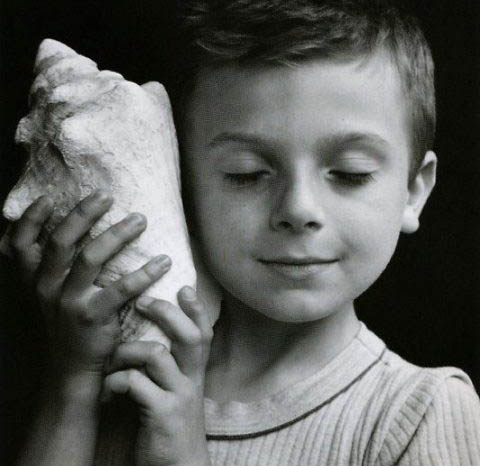
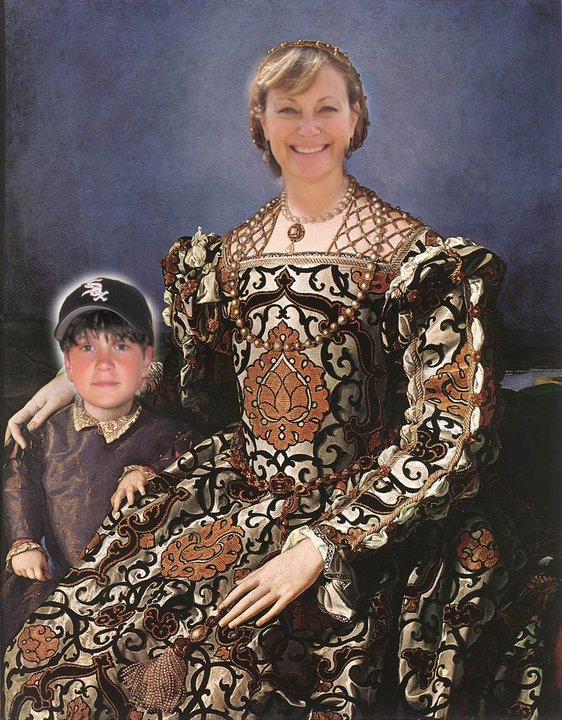
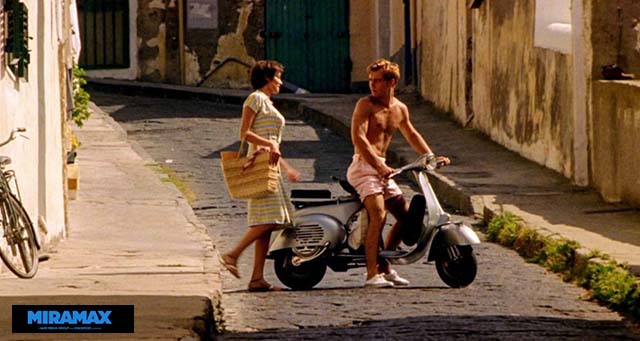
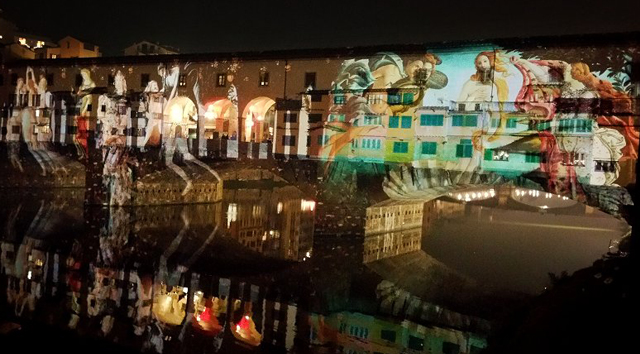

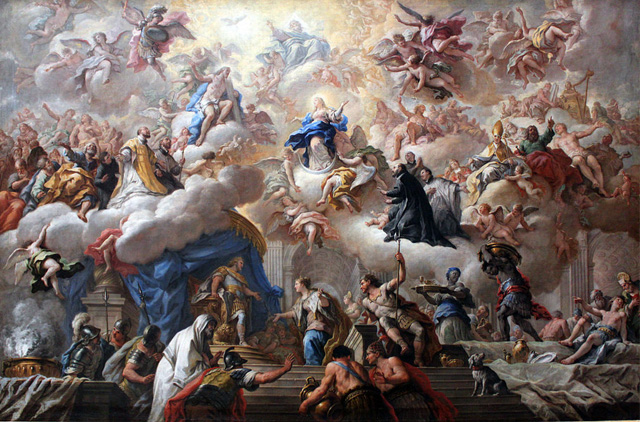





Love your website, Melissa, love reading your posts in Italian. Not that I have the confidence to comment in same! I was especially enchanted to see this post as long ago I wrote a paper on that fresco. Haven’t seen it for 20 years, thanks for the opportunity to revisit it!
Ciao Lesley! Thanks for your comment. Isn’t Ghirlandaio wonderful?! I had the opportunity to revisit those frescos in Santa Maria Novella with my three boys last year when we took them for the first to with us to Italy. The frescos are so lovely. Sono anche contenta che a te piaccia il blog! Grazie! 🙂
Che bell’articolo,Melissa! A volte mi fa stupire quanto un quadro possa nascondere dentro di sè.Grazie per aver svelato il mistero del”Ritratto… e anche per “bitorzoluto.”(Si,una bella parola ma difficilissima da memorizzare-forse stavolta sarebbe opportuno ripeterla 160 volte) 🙂
Ciao Leo, sempre un piacere leggere i tuoi commenti. Grazie! C’è molto da imparare da guardando un quadro con calma …dopo un po’ i quadri cominciano a rivelare i loro segreti! 😉